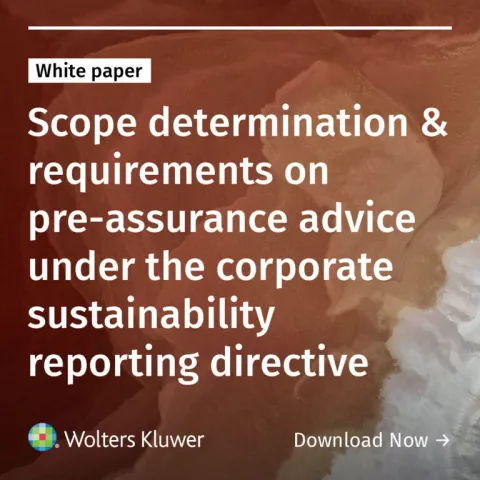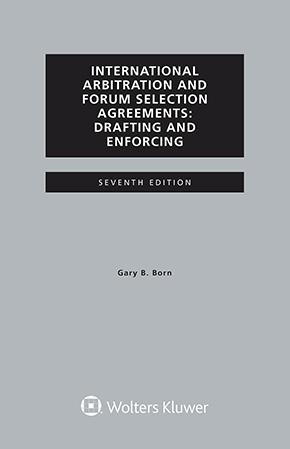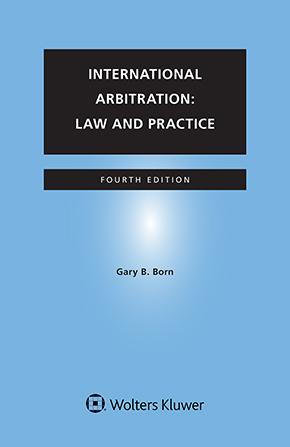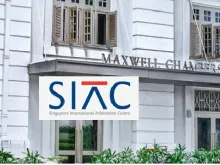The CIAC at 40: Navigating Construction Arbitration in the Philippines
September 2, 2025
The Philippines is undergoing a significant infrastructure expansion, with the government allocating PHP 1.507 trillion in 2025—equivalent to 5% of GDP—for development projects. This surge, supported by institutions like the Asian Development Bank, has led to a booming construction market, valued at USD 39.4 billion in 2024 and projected to reach USD 60.08 billion by 2033. With this, arbitration has emerged as the preferred method for resolving disputes, particularly in internationally funded projects.
Commercial arbitration in the Philippines is governed by the Alternative Dispute Resolution Act of 2004 (“ADR Act”) which is based on the pre-2006 UNCITRAL Model Law.
Construction arbitration for parties engaged in construction in the Philippines, however, is governed by a distinct system under Executive Order No. 1008 (1985), known as the Construction Industry Arbitration Law (“CIAL”). This law established the Construction Industry Arbitration Commission (the “CIAC”) which has its own statutory framework and procedural rules.
As we mark the 40th anniversary in 2025 of this dedicated statutory framework for construction arbitration, there are many remarkable features of the CIAL and the CIAC that parties should be aware of when including an arbitration clause in their construction agreement for a project to be performed in the Philippines.
CIAC’s Exclusive Jurisdiction
The CIAC’s jurisdiction is stated at Section 4 of the CIAL — the CIAC has original and exclusive jurisdiction over disputes arising from or connected with construction contracts in the Philippines, whether public or private, and regardless of whether the dispute arises before or after project completion or abandonment. For the CIAC to assume jurisdiction, the same section under the CIAL requires that three conditions must be met: (1) the dispute must relate to a construction contract; (2) the contract must involve parties, whether foreign or domestic, engaged in construction in the Philippines; and (3) there must be an agreement to arbitrate.
For purposes of the CIAC’s jurisdiction, the term ‘construction’ refers to “all on-site works on buildings or altering structures, from land clearance through completion including excavation, erection and assembly and installation of components and equipment”. Moreover, under the CIAL, the CIAC’s subject matter jurisdiction reflects a broad definition of the kinds of construction disputes that can arise when engaged in construction, including interpretation and breach of contract, claims related to defective materials, delays, payment defaults, and cost variations. The only stated exclusion pertains to labor disputes, which fall under the Philippine Labor Code.
The CIAC’s exclusive jurisdiction has important practical consequences.
First, ADR mechanisms, including prior referral of a dispute to a Dispute Adjudication Board, cannot be conditions precedent to the CIAC’s jurisdiction. Rather, the Philippine Supreme Court in Hutama-Rsea Joint Operations, Inc. v. Citra Metro Manila Tollways Corporation (G.R. No. 180640, 2009) held that a condition precedent in the construction contract, which would effectively suspend the jurisdiction of the CIAC until compliance therewith, would conflict with the recognized intention of the law to automatically vest the CIAC with jurisdiction over a dispute if the construction contract under which the dispute arose from contains an arbitration clause.
Second, even if a contract specifies another arbitral institution such as the International Chamber of Commerce (“ICC”), the CIAC can still assert jurisdiction. This principle has been codified in Section 4.1 of the CIAC Rules of Procedure (“CIAC Rules”) and upheld in cases such as Hutama-Rsea v. Citra Metro Manila Tollways, supra, and Grandspan Development Corp. v. Baker, (G.R. No. 251463, 2023).
Thus, when it comes to asserting the jurisdiction of the CIAC, arbitration experts opine that a “first to file” rule has been adopted. It would follow from this “first to file” rule (which has yet to be applied by the Philippine courts) that if a case has already been filed with the institution named in the arbitration clause, the CIAC may refuse jurisdiction. Further, the authors are of the view that if a party initiates arbitration with the institution named in the arbitration clause instead of the CIAC, and the other party participates without objection, Philippine courts will follow the same approach as in non-construction cases — that party may be estopped from later challenging jurisdiction.
There are only a few reported cases, to our knowledge (e.g., here, here, and here), where Philippine construction-related arbitrations have been administered by institutions other than the CIAC. However, these cases were either settled, remain pending, or have not reached the Supreme Court. It thus remains to be seen if an award in a construction dispute rendered under the aegis of an institution other than the CIAC can be definitively enforced in the Philippines.
With this risk, the practice in the Philippines is to err on the side of caution and proceed to arbitration with the CIAC to prevent possible costly and prolonged litigation on jurisdiction and enforcement, especially if enforcement will be in the Philippines. Further, some major infrastructure contracts provide for a distinction between “construction disputes” (which are referred to the CIAC) as opposed to “non-construction disputes” (which are referred to other arbitral institutions) in their dispute resolution clauses. Otherwise, the default jurisdiction of the CIAC provided by law may present jurisdiction and enforcement issues. For example, a Korean court has refused recognition of a CIAC award because the parties originally agreed to refer their disputes to a different institution.
Conducting CIAC Arbitration
There are a number of distinctive features of the CIAC that set it apart from other arbitral institutions and other arbitration proceedings in the Philippines.
While foreign parties can engage foreign-qualified counsel to assist in CIAC proceedings, such counsel may not appear before the tribunal as an advocate.
Meanwhile, CIAC arbitrators must be accredited by the CIAC. The pool is relatively small, comprising around 80 professionals, including lawyers, engineers, and architects.
The appointment of foreign arbitrators is possible but difficult, as it is subject to stringent conditions, including the requirement that the dispute be a construction dispute involving an international party (one whose place of business is outside the Philippines, which excludes a domestic subsidiary of such international party or a co-venturer in a joint venture).
The CIAL does not provide for emergency arbitration. Parties requiring urgent interim relief must seek assistance from Philippine courts before the tribunal is constituted. Once proceedings begin, the CIAC tribunal has broad powers to order interim relief under the CIAC Rules. This includes preliminary injunctions directed against a party, appointment of receivers, preservation, site inspections, and document production. These orders can be enforced directly by the sheriffs of the Construction Industry Authority of the Philippines of which the CIAC is an implementing arm. Philippine courts, however, still play a role in enforcing interim relief in relation to pending arbitration proceedings, where the arbitral tribunal cannot act, for example, when there is a request to bind third parties to the arbitration proceeding (e.g., in an ICC case involving a construction contract).
Finally, unlike awards governed by the ADR Act, a CIAC award may be subject to appeal on limited grounds, including pure questions of law, and those involving questions of fact where there are challenges to the integrity of the arbitration.
Apart from the aforementioned specific features, CIAC arbitration generally follows a structured process that includes a case management conference (or a preliminary conference), the signing of Terms of Reference, and hearings. The CIAC also offers small claims procedures, providing flexibility for lower-value disputes. Awards must be rendered within six months from the signing of the Terms of Reference, with extensions subject to the CIAC’s approval. This has been consistently complied with — in 2021, CIAC reported that 40 out of 46 cases were resolved within this timeframe, with the remainder settled by compromise. Notably, CIAC awards are readily enforceable as they generally become executory upon the lapse of 15 days from receipt by the parties.
CIAC arbitration is therefore accessible to most international arbitration practitioners, with familiar procedures and procedural rights. However, key differences remain — such as restrictions on foreign counsel appearing before the CIAC, a limited pool of arbitrators, the absence of emergency arbitration rules, and the possibility of appealing an award — which may affect how practitioners engage with the process. These are some things to remember in light of the default jurisdiction of the CIAC over disputes which the parties may have originally intended to resolve under a different set of arbitral rules.
Reflections on the CIAC at 40
Over the past four decades, the CIAC has established itself as a cornerstone of construction dispute resolution in the Philippines. When it was first created, the CIAC was envisioned to provide a specialized, efficient, and accessible forum for construction-related disputes, and it has, to a large extent, successfully achieved this.
Over the years it has been in operation, its framework has evolved to accommodate the technical nature of disputes, building up a specialized pool of local arbitrators and maintaining an emphasis on speed and cost-effectiveness, whilst inherently reflecting the technical and practical constraints that are inherent to construction arbitration.
As the scale and complexity of construction projects in the Philippines continue to grow and internationalize, a continued point of challenge has been the interaction between the CIAC’s jurisdiction and the ability of parties to select foreign arbitral seats and institutions. As these challenges have worked through the Philippines court system, parties have gained more flexibility in making a choice on whether to use the CIAC, and have more predictability on how the CIAC’s ‘exclusive’ jurisdiction will be regarded by local courts.
Looking ahead, the continued operation and growth of the CIAC arbitration system may require a sustained commitment to building out the pool of available arbitrators, recognizing the evolving needs of parties engaged in complex infrastructure and development projects, and updating both the CIAL and the CIAC Rules to bring in the latest updates in international practice and procedure. Any such changes will need to be carefully considered within the context of the ADR Act.
Conclusion
Construction arbitration in the Philippines is subject to a unique system that still offers a structured and efficient alternative to litigation. By carefully structuring dispute resolution clauses and adhering to the CIAC Rules, parties can navigate the complexities of construction arbitration in the Philippines to achieve effective resolution of their disputes. This includes making deliberate drafting choices such as: (1) using split arbitration clauses to distinguish between construction and non-construction disputes; (2) specifying foreign arbitral institutions where appropriate, taking into consideration where the award will be enforced, and ensuring the clause is enforceable under Philippine law; and (3) naming the CIAC as the forum for construction disputes while incorporating tailored provisions that reflect the parties’ procedural preferences. These strategies can help mitigate jurisdictional uncertainty and align the arbitration process with the parties’ objectives.
The views expressed herein are entirely those of the authors and not necessarily those of the firm or organisation with which they are affiliated.
You may also like











